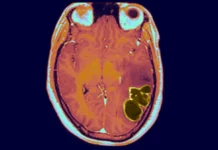The Fed’s Enigmatic Path Amidst Banking Catastrophe
Balancing Inflation and Collapsing Banks
As the Federal Reserve finds itself entangled in the precarious task of combating inflation and addressing the fallout of Silicon Valley Bank and Signature Bank’s recent collapse, its journey ahead is laden with complexity. With the looming specter of approximately 190 lenders on the verge of collapse, the Fed finds itself walking a tightrope, hesitant to hike interest rates and potentially exacerbate the situation. Initially, a half-percentage point rate increase was on the horizon, but the financial implosion has shifted expectations to a quarter-point hike or even a temporary cessation.
Fascinatingly, this banking turmoil might serve as a curious boon to the Fed, driving down prices without the need for interest rate elevation. With the threat of bank runs sending shivers down financial institutions’ spines, a more cautious approach to capital reserves emerges. Consequently, this newfound prudence yields a disinflationary effect. The act of small and midsize banks tightening lending standards could very well stymie economic growth, mimicking the impact of a half-point rate hike orchestrated by the Fed.
The Fed’s Unfinished Symphony
Nevertheless, not all concur that the Fed’s role in this unfolding drama is complete. Some economists, entrenched in debate, maintain that without the Fed’s decisive action to increase interest rates, a series of policy reversals may ensue. This could ultimately fail to orchestrate a soft landing, igniting further financial volatility.
The Phoenix of Bank Stocks: Yellen and Dimon Take Charge
In the aftermath of Silicon Valley Bank and Signature Bank’s downfall, stocks of small and mid-sized banks across the nation took a nosedive. As a remedy, US Treasury Secretary Janet Yellen and JPMorgan Chase CEO Jamie Dimon joined forces, a duo determined to rekindle confidence in the banking sector. Yellen’s assurances that the US government would stand as a bulwark, safeguarding smaller banks and their deposits, dovetailed with Dimon’s initiative to forge a rescue plan for First Republic.
The concerted efforts of this financial dynamic duo appeared fruitful, as evidenced by First Republic’s shares soaring nearly 30% and the SPDR Regional Banking Equity Traded Fund witnessing a 5.8% gain. The fate of the banking sector now hinges on the Federal Reserve’s policy determinations and the resilience of banks themselves.
An Era’s End: The Cease of the Home Price Escalation Epoch
In February, the US housing market saw an unexpected turn of events: the median home price dipped below that of February 2022, marking the cessation of an unprecedented decade-long surge in year-over-year price growth. Data from the National Association of Realtors (NAR) reveals a median existing home price of $363,000, a subtle 0.2% decrease from the previous year.
Lawrence Yun, NAR’s chief economist, anticipates a continued price correction, albeit without the specter of a housing market crash. This inaugural drop in median home prices is likely to persist, as Yun projects a 2% decline over the course of the year. Concurrently, home sales experienced a remarkable resurgence, with the largest monthly percentage increase since July 2020. This marked the end of the most protracted sequence of month-to-month declining home sales in recorded history.








